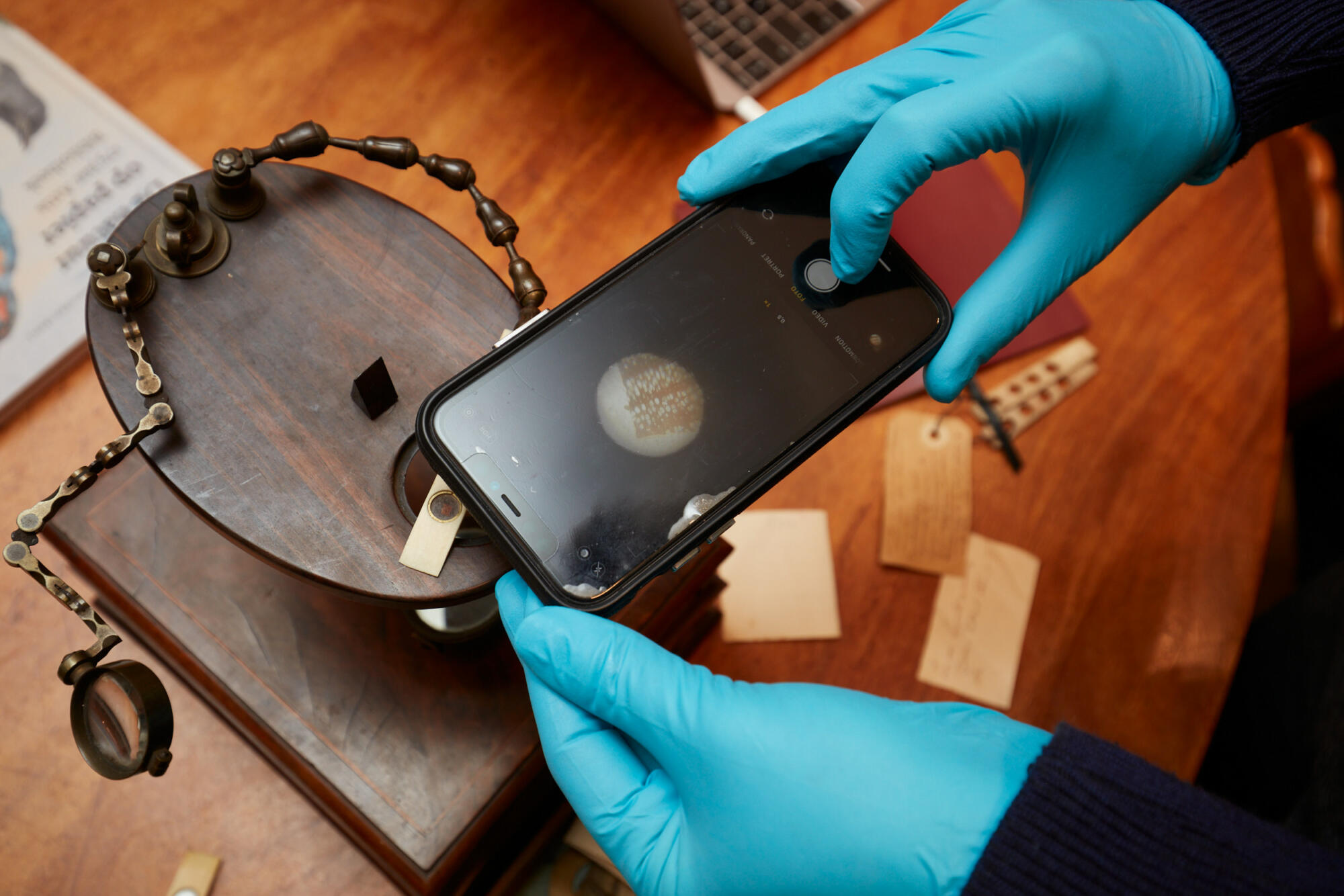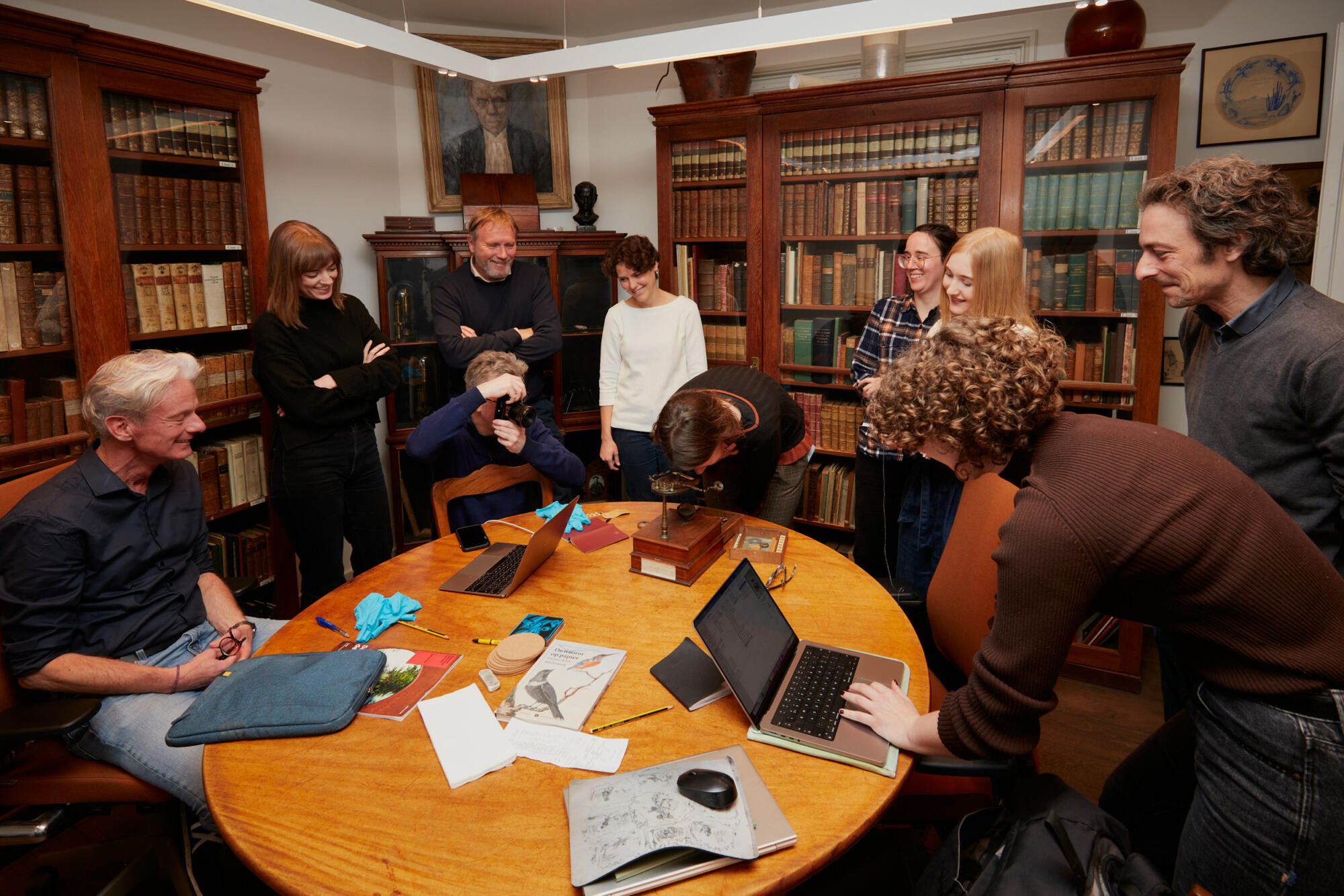The VisionLab at the Artis Library on February 29th started with an intriguing exploration of a manuscript by Johannes Schepens from circa 1800. Despite the lack of in-depth research into his life and work, the book offered a fascinating glimpse into his world: a silversmith who examined the secrets of the honeybee through his microscope. Although his work seemed practically ready for publication, it was never released. The team speculated on possible reasons: was it due to his stroke in 1808, two years before his death? Was the text too outdated for the nineteenth century? Or were the images too detailed to accurately reproduce in engravings?
When considering the abundance of illustrations created with watercolours in this manuscript, we encountered several problems. All these small details would have been lost too quickly in the printing process of the copper plates; continuous touch-ups would have been a necessity. Discussions about the techniques Schepens used were fuelled by admiration for his precision work. Looking at how he depicted retinas and brains in proportion to the size of the insects, was amazing to the team. The details were so intricate that it was easy to lose sight of what exactly was being observed. Fortunately, the text in the accompanying manuscript often provided clarification.
The VisionLab continued on March 1st, focusing on the exploration of Pierre Lyonet’s work, which was introduced to us by team member Larissa van Vianen. Lyonet initially practiced law but transitioned into becoming a natural scientist and artist, conducting his own observations and translating them onto copperplates. The exceptional intricacies and distinctive methods in etching and engraving are captivating. During the VisionLab, the epistemological value of his drawings was extensively discussed. The team was noting on how fine his line techniques were and how the extensive use of black may have been employed to conceal imperfections.
Moreover, the unique opportunity to work with his original microscope arose. Botanical artist Esmee Winkel made sketches of the tiny wood preparations placed under the microscope. The result? Two drawings, each of which she worked on for about an hour. It was discussed how Lyonet undoubtedly became faster and more skilled over time. Considerations were made regarding the idea that after drawing approximately a hundred caterpillars throughout one’s life, the task of drawing them freehand unquestionably becomes more manageable. Finally, it was suggested how symmetry could be applied: it’s easy to draw one half of an insect as seen through the microscope and then precisely mirror that half. These insights hold immense value.
The two days ended with reflections on microscope usage and translating observations into publications. These collaborative outcomes were essential contributions to the ongoing research.

